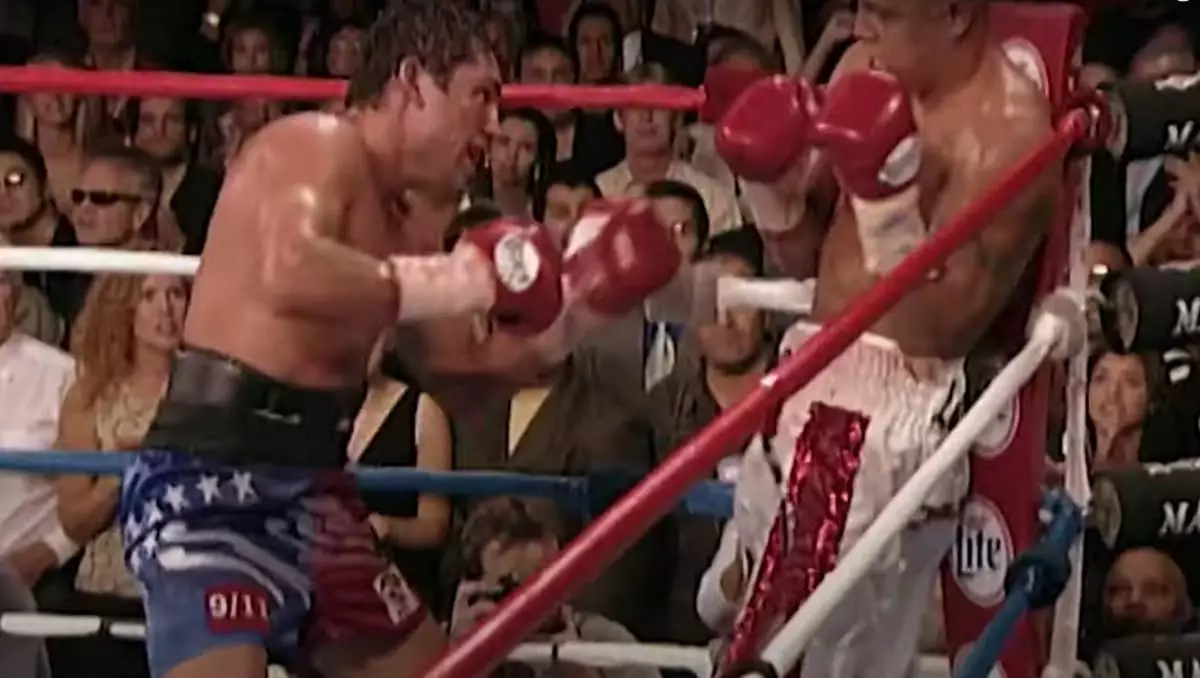BY BOXING HIT STAFF-
In the annals of boxing history, certain matchups transcend mere sport to become emblematic of the struggle for supremacy, resilience, and respect within the squared circle. One such encounter is the legendary clash between Oscar De La Hoya and Fernando Vargas on September 14, 2002, at Mandalay Bay in Las Vegas. This bout not only highlighted the intense rivalry between the two fighters but also solidified De La Hoya’s legacy in professional boxing following a series of challenging bouts. Examining the intricacies of their rivalry and the bout itself provides insights into both fighters’ philosophies and the enduring appeal of boxing.
Prior to their showdown, the rivalry between De La Hoya and Vargas was characterized by a mixture of personal animosities and professional stakes. De La Hoya, known as “The Golden Boy” for both his stunning looks and fighting prowess, went into the fight already with notable losses to Felix Trinidad and Shane Mosley. With a growing burden of expectation coupled with diminishing invincibility, he stood at a pivotal crossroads in his career. Vargas, on the other hand, was perceived as the young, ferocious upstart who wanted to dethrone De La Hoya and capitalize on the latter’s waning dominance in the boxing ring. Vargas’s strong assertions of past grievances against De La Hoya, including claims of disrespect during training, elevated the feud from mere sporting competition to a clash of wills, fueled by emotional undertones.
From the onset of the bout, it was clear that the fight would be an all-out war. Vargas charged into the early rounds, employing aggressive tactics that showcased his relentless style—pressuring De La Hoya and asserting dominance. While Vargas fought like a man possessed, his intensity brought palpable excitement to the arena, yet it also played to De La Hoya’s strengths as the sharp counter-puncher. Critics had often underestimated De La Hoya’s resilience, but he defied expectations by absorbing Vargas’s early onslaught while patiently waiting for his opportunity.
As the fight progressed, there was an undeniable shift in momentum. The experience of De La Hoya shone through, as he began to exploit Vargas’s fading stamina. In an ironic twist of fate, it was De La Hoya—often criticized for not finishing fights strong—who surged in the later rounds. This ability to adapt and seize control demonstrated not only his raw talent but also his mental fortitude.
A Fight for the Ages
The climax came in the eleventh round, where De La Hoya delivered a left hook that twofold—altering Vargas’s trajectory in the fight and etching a moment in boxing history. The decisive knockdown that followed epitomized De La Hoya’s strategic evolution as a fighter. By the end of the round, as the referee stepped in, De La Hoya declared victory, but the significance ran deeper—both fighters emerged elevated in status.
While De La Hoya celebrated, Vargas, despite the loss, accrued increased respect within the boxing community for showcasing extraordinary heart and determination throughout the match. Their legacies became intertwined that night, with an enduring mutual respect formed in the heat of competition.
Fast forward to today, and discussions surrounding the potential fight style and implications of newer boxing prospects like Canelo Alvarez and Edgar Berlanga provide a sense of nostalgia. The legendary De La Hoya-Vargas encounter serves as a benchmark for understanding how the mental and emotional pressures of such high-stakes events can affect young fighters today.
As Vargas pointed out, the bright lights of major promotions can be daunting for younger fighters, providing a stark reminder of the dual challenges they face: the physical demands of boxing and the mental toll of performing under pressure. As fans, we hope that the next generation of fighters can replicate the thrilling narrative we witnessed in 2002—where the stakes are high, emotions run deep, and legacies are forged. The enduring magnetism of boxing lies in its stories, and this particular battle remains an iconic chapter in the sport’s rich tapestry.


Leave a Reply